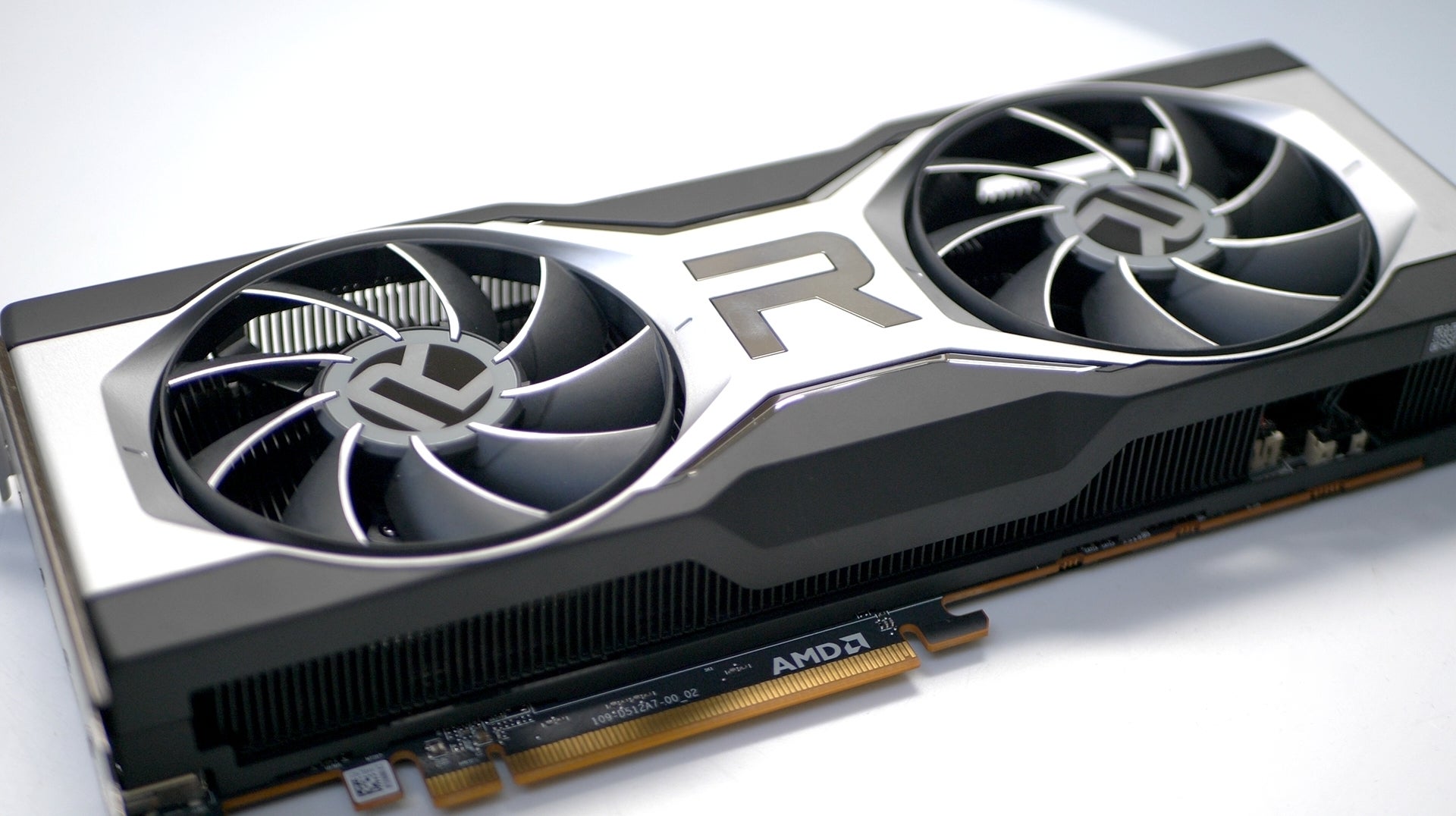So far, AMD’s Big Navi graphics cards have lived up their name, giving gamers a true alternative to erstwhile industry leader Nvidia. The RX 6800, 6800 XT and 6900 XT have proved that Team Red can compete at the highest level of the graphics card market, something that hasn’t been true for generations. Now though, AMD is expanding its RX 6000 lineup, towards the more mid-range and mainstream cards that will far outsell the ‘halo’ products at the top of the stack. The first step comes in the form of the RX 6700 XT, a mid-range graphics card aimed at high-end 1440p gaming.
The new $479/£419 card is intended to slot between – and compete with – the $399 GeForce RTX 3060 Ti and $499 RTX 3070, and starts shipping from tomorrow, March 18th. With those price points, we expect to see a card that trades blows with the RTX 3070, offering the same major features, including hardware-accelerated ray tracing and other DirectX 12 Ultimate goodies, while coming in slightly cheaper. It’s a recipe that has worked well for AMD in the past, and with both next-gen consoles using the same RDNA2 architecture, the company just needs a standout – yet affordable – PC product to complete the trifecta.
Radeon RX 6700 XT Review vs RTX 3060 Ti/ RTX 3070/ RX 6800 – It’s Good But Is It Good Enough? Watch on YouTube
From a hardware perspective, the RX 6700 XT is intriguing. As with past Big Navi designs, the RX 6700 XT uses an Infinity Cache to accelerate its memory subsystems, a salve intended to offer equivalent performance to the high-performance GDDR6X memory in Nvidia’s highest-end cards at a fraction of the cost. It works similarly to the L3 cache in AMD’s Ryzen processors, storing recently or frequently-requested data locally so that slower data paths needn’t be used. Here, the Infinity Cache is 96MB rather than 128MB as we saw in the RX 6800 and up, but AMD still promises exceptional performance – 2.5 times the effective memory bandwidth of a 256-bit bus, delivered with a memory bus that’s only 192 bits wide.
As we saw on the RTX 3060 late last month, the bus size means that AMD could equip their card with 6GB or 12GB of GDDR6 memory, and like Nvidia they went with the latter option, giving this card a healthy amount of RAM for its intended performance tier. This card, like its brethren, also supports Smart Access Memory (also known by the more generic term Resizeable BAR), which provides processors direct access to that entire 12GB of memory rather than requiring them to go through a small 256MB I/O buffer. Enabling this tech on supported motherboard and CPU combinations can boost in-game frame-rates by around 15 per cent in some scenarios; we’ll show the results of our testing here later on in the review.
1 of 11 Caption Attribution A look around the RX 6700 XT, comparisons to Big Navi cards and the Nvidia competitors – RTX 3060 Ti and RTX 3070.
| AMD GPU Specs | CUs | Game Clock | VRAM | Mem Interface | TDP | Price |
|---|---|---|---|---|---|---|
| RX 6900 XT | 80 | 2015MHz | 16GB GDDR6 | 256-bit + 128MB IC | 300W | $999 |
| RX 6800 XT | 72 | 2015MHz | 16GB GDDR6 | 256-bit + 128MB IC | 300W | $649 |
| RX 6800 | 60 | 1815MHz | 16GB GDDR6 | 256-bit + 128MB IC | 250W | $579 |
| RX 6700 XT | 40 | 2424MHz | 12GB GDDR6 | 192-bit + 96MB IC | 230W | $479 |
| RX 5700 XT | 40 | 1755MHz | 8GB GDDR6 | 256-bit | 225W | $399 |
| RX 5700 | 36 | 1625MHz | 8GB GDDR6 | 256-bit | 180W | $349 |
| RX 5600 XT | 36 | 1375MHz | 6GB GDDR6 | 192-bit | 150W | $279 |
| RX 5500 XT | 22 | 1717MHz | 8GB GDDR6 | 128-bit | 130W | $199 |
The rest of the specs also make for interesting reading (if you’re a massive nerd like me, anyway). The RX 6700 XT’s design uses 40 compute units, exactly half the complement of the RX 6900 XT flagship, with the clock speeds dialled way up to compensate for the diminished compute. In game, this card tends to runs between 2400 and 2500MHz, an incredible figure even for a 7nm design – given that the 8nm RTX 3070 is more like 1850 to 1920MHz. These extremely high clock speeds are reflected in the healthy 230W TDP, just 20W below the RX 6800 which uses a much larger 60CU Navi 21 GPU.
